How To Test PH? This article will go over how you can measure aquarium pH levels using a test kit, taking samples of water from your tank, comparing those results to color charts and determining what type of pH level you have! You will also learn how to measure aquarium pH with an electronic meter.

This is very useful as it will provide real-time measurements of the water, which is especially helpful for those that have multiple tanks or are using filtration systems that change pH levels often.
Importance
Aquarium pH is important because it can cause damage to your fish’s skin and gills if too acidic. If the water is alkaline, it can make it difficult for them to breathe or even kill them.
Aquarium pH is the most important parameter to monitor in a fish tank. Keeping your pH stable is very crucial for your aquarium and the health of your fish and aquatic plants.

There are many ways to measure aquarium pH . You can use a test kit to determine your pH level or you can purchase a digital meter.
What Should You Know?
Before beginning to test your aquarium pH it is important to know that PH varies during the day from early morning to mid day and night. It is best to take a reading at the same time each time you measure pH so that you are able to compare the pH in a proper manner.

It’s also important that you do not compare results from one test kit to another and always follow manufacturers instructions for use accurately .
Where Can You Find Them?
You can purchase aquarium pH test kits at most pet stores or You may even find them online. Keep in mind though, some brands aren’t very reliable so read reviews before purchasing anything!
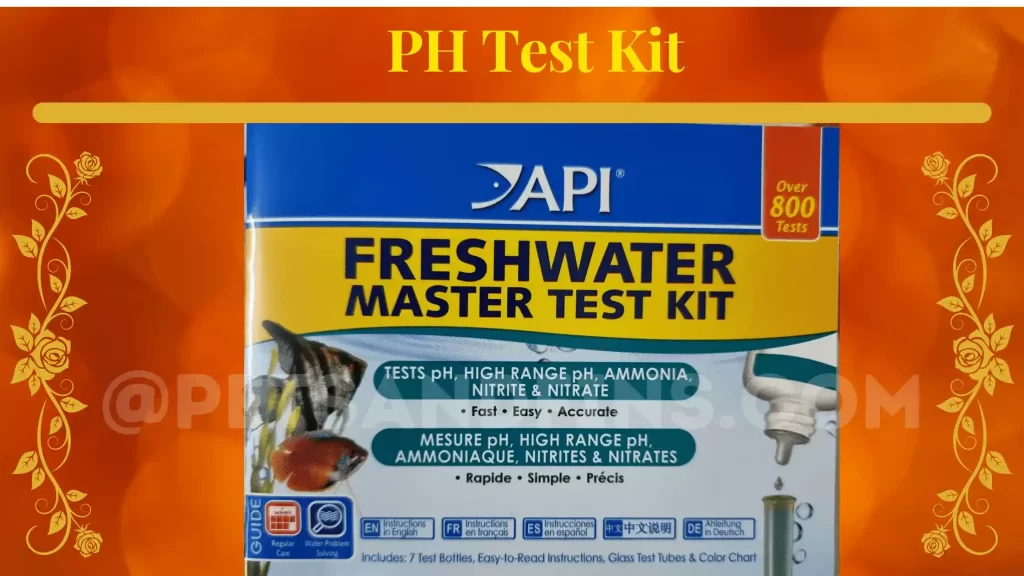
How To Collect The Sample?
Let us start with how to collect your sample from the aquarium. It is important that you wash the test-tube thoroughly before using it and ensure that it is not contaminated in any way.
Then ensure that you collect the sample from the aquarium and while doing so ensure that no dust or food particles are collected in the sample. It is also important that you Collect the exact quantity that is recommended for testing.
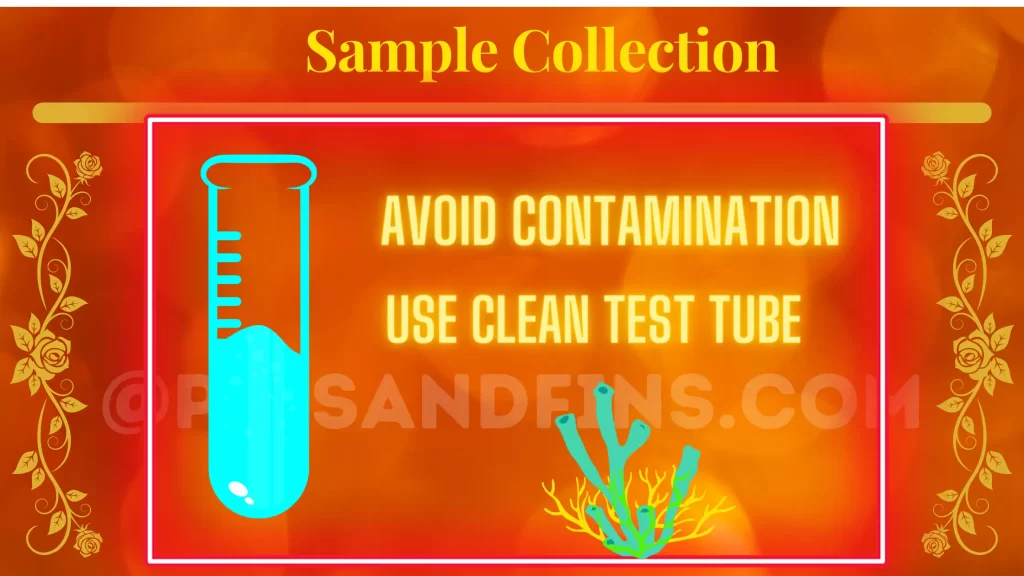
It is usually 5ML. also ensure that you do not contaminate the sample with your fingers. It is always recommended that you wash your hands before collecting the aquarium sample.
How To Test?
Now time for you to take the dropper and add the number of recommended drops into the sample and wait for the sample to change color.
About 30 seconds would be appropriate, however, if the manufacturer recommends a period of waiting it is best that it is followed.
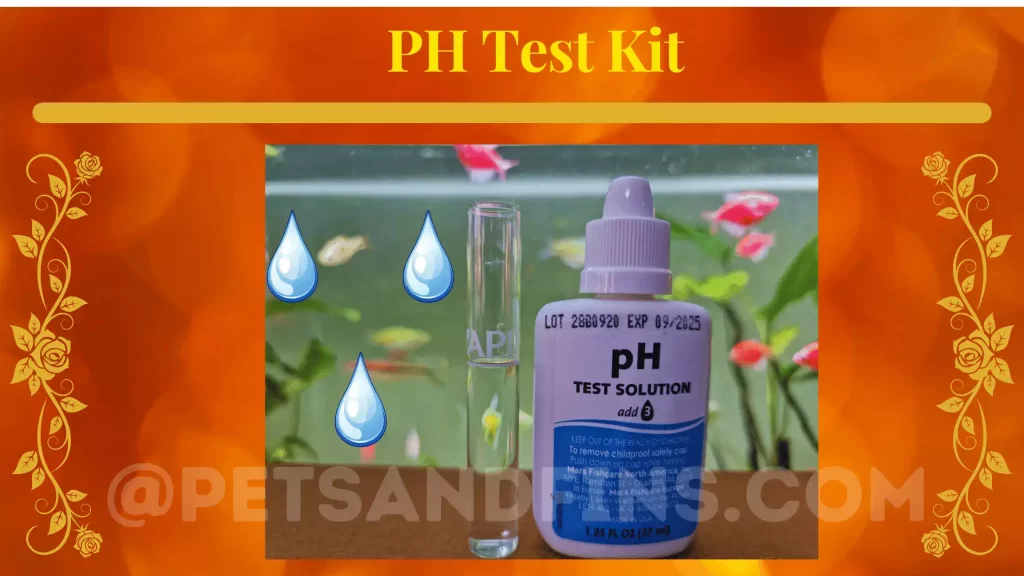
Once the sample changes color, compare the sample to the color chart provided by the manufacturer.
Make sure you use the color chart provided by the same manufacturer whose dropper has been used. You will not get accurate results if you use the color chart of another manufacturer.
The API Test kit provides the number of drops on the bottle. So its very easy. In this case its 3 drops.
How To Check Your Result?
while comparing the sample to the color chart, ensure that you match the sample to the nearest color. This means the color in the sample must be the closest color available on the chart.
It is this comparison which will help you ascertain the exact pH level in your aquarium. You could always use the help of another person if required. This will ensure that your comparison and the matching of the color chart is perfect.
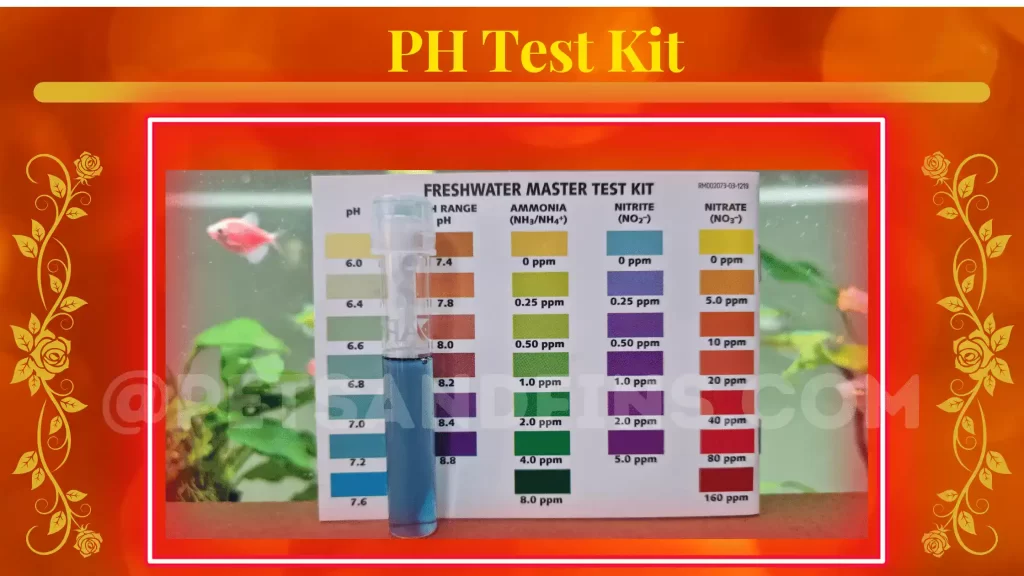
Pro Tip: Also make sure that no light or reflection is affecting your viewing of the sample while comparing it to the chart.
Once you know the The color on the chart provided by the manufacturer look at the readings given next to the colors. You will then know your aquarium PH.
If it is too high or too low you will need to take steps to either increase or decrease your PH. If you would like to know more about PH its implications on fish and aquatic plants, methods to raise or lower your aquarium PH click here.
Pro tip: do not try and alter your pH unless it is extremely necessary. The most important factor that you need to take into account before trying to worry your pH is the health of your fish. If the PH is just a little bit here and there and your fish are doing extremely well then the wisest thing to do is “do nothing“.
Digital PH Meter
The next thing we are going to talk about is how to use a digital PH testing meter. Digital testing meters are available online or in your aquarium store. Some of digital testing centres need calibration and some do not.

Let us first talk about using a digital testing meter which does not need calibration. These meters just involve Switching the digital meter on and dipping it into an aquarium and waiting for The PH to stop jumping.
Once the meter starts showing the same reading wait for 30 seconds to be sure and then look at the reading. That will be your PH.
Calibration
if you have purchased a digital meter that requires calibration here is how you it. Take a container with about 250 ML of distilled water and add the buffer given by the manufacturer. Then check the temperature of water.
Once you know the temperature of the water compare it to the chart given by the manufacturer where you will see what is the calibration required for each temperature separately.
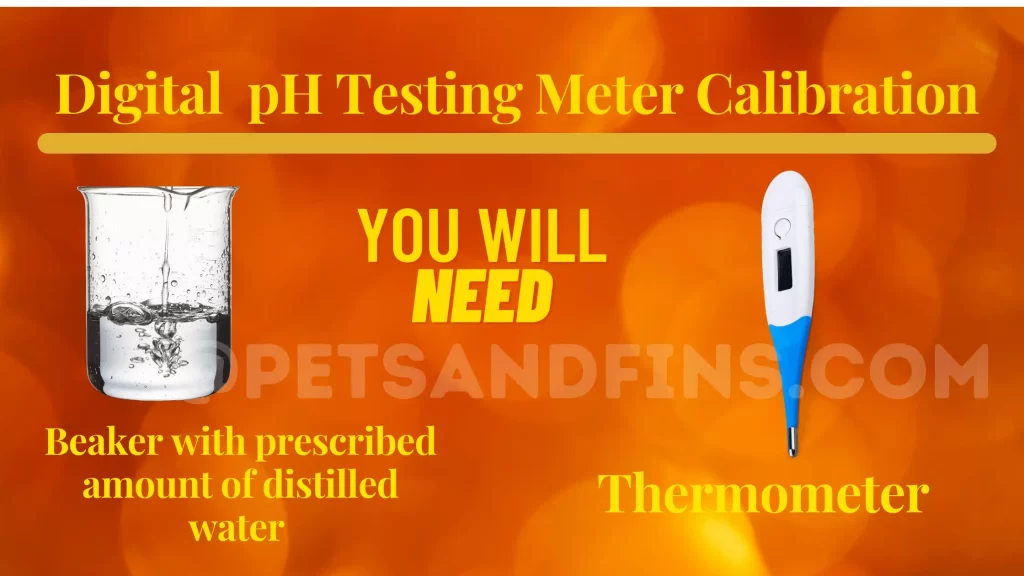
Wait for at least one minute after dipping the digital meter into the distil water solution. You will see that the pH changes.
Once the pH remains stable, use the screwdriver Provided by the manufacturer and turn does through clockwise direction until you achieve The calibration required for that particular temperature.
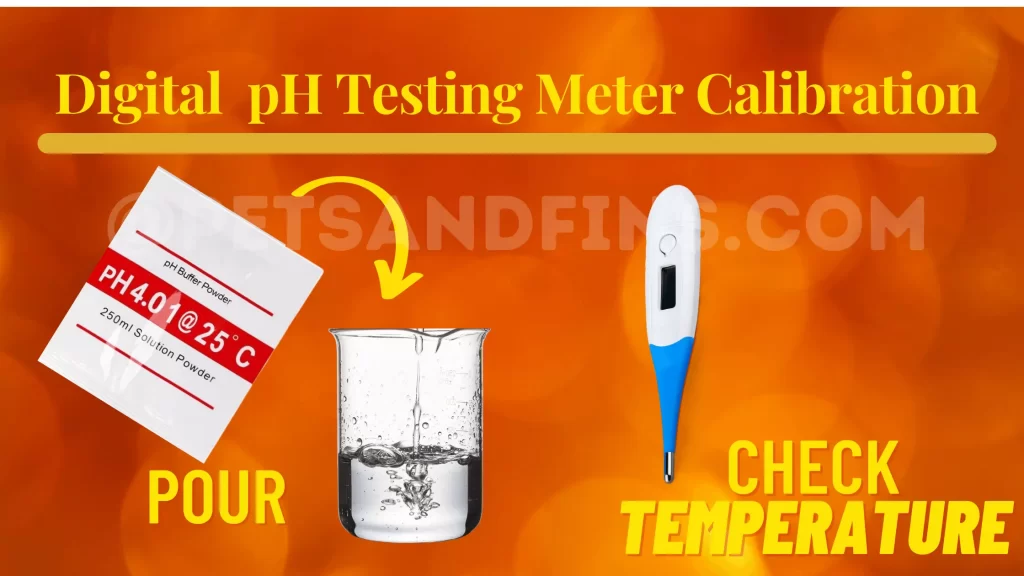
For example if your temperature is 25 you will need to set the ph meter to 4.0. So, after you PH is stable, if it is not already at 4.0, you will have to rotate the screw until you achieve 4.0.
Remove it from the container and wait for the pH meter to change its reading. Dip it back and re-check if it again reaches 4.0. If that is achieved, you have calibrated the pH meter successfully.
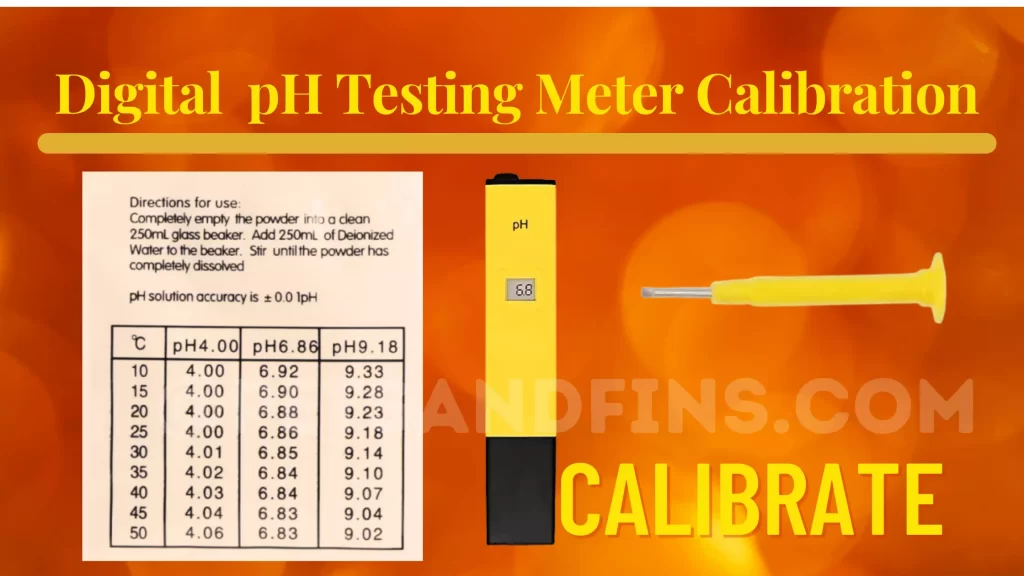
Checking Your PH With Digital Meter
You can now check your aquarium PH by dipping the pH meter into the aquarium.
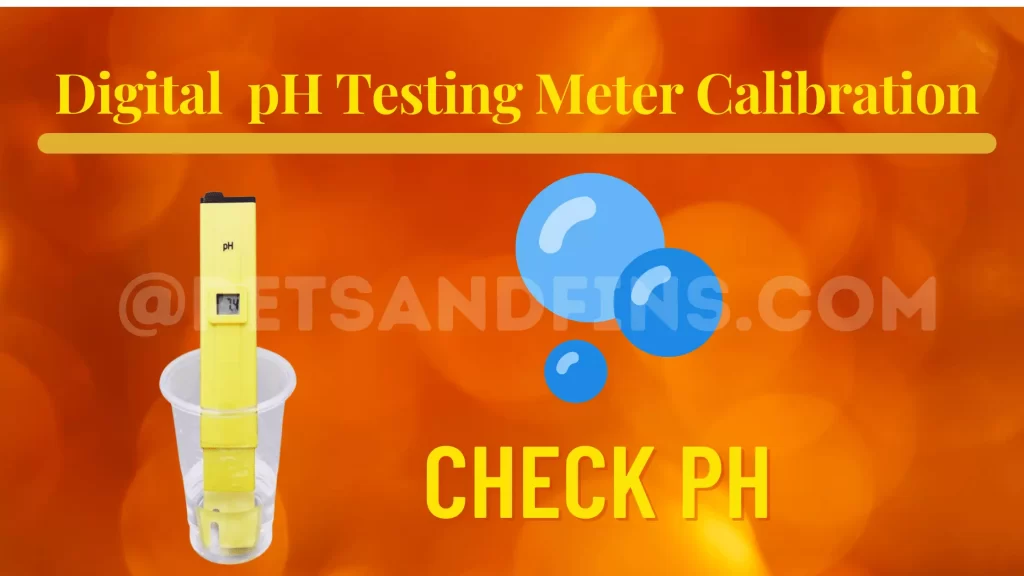
Many people do not prefer calibrating and opt for auto calibration PH digital meters. These are also equally accurate and trustworthy.
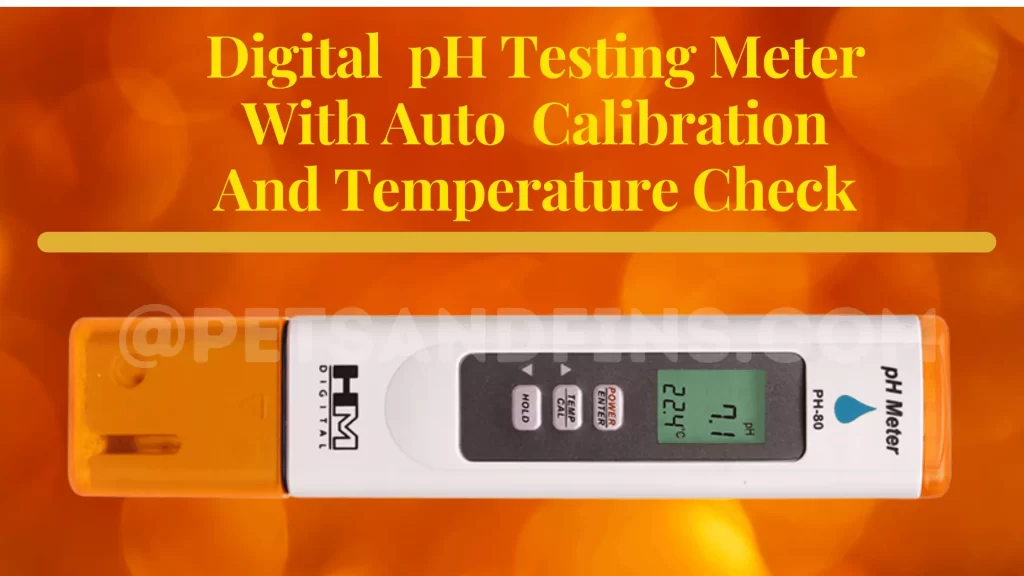
Here are a few recommendations:
1.Apera instruments AI209
2.Digital Ph meter by Risantec
3.Digital ph meter 0.01 Ph
4.Dr.Meter
5.Vantakool
Wrapping Up:
Testing aquarium pH is very important. Regular checking of pH can help you prevent and spikes which lead to death of fish. pH can be checked with a regular test kit or Digital meters. Either one is fine to use as long as you have one.

